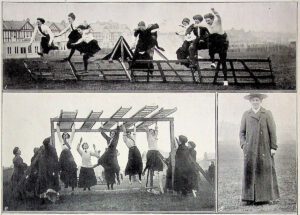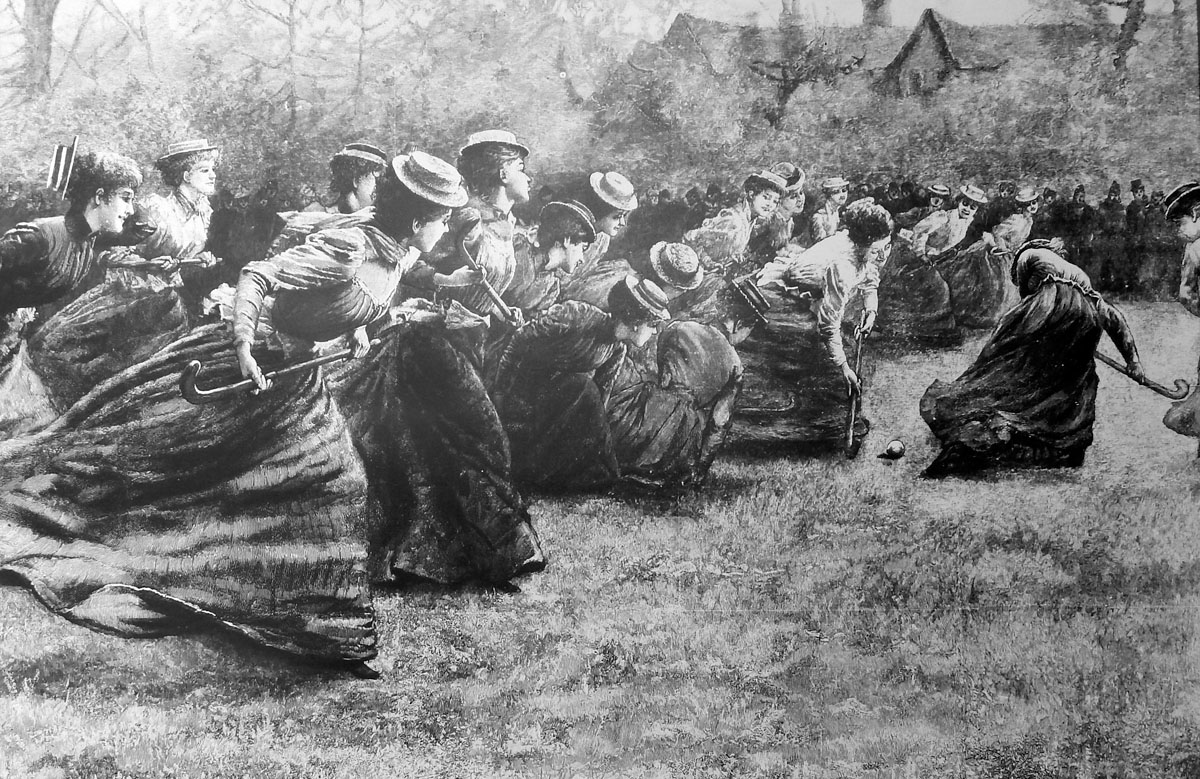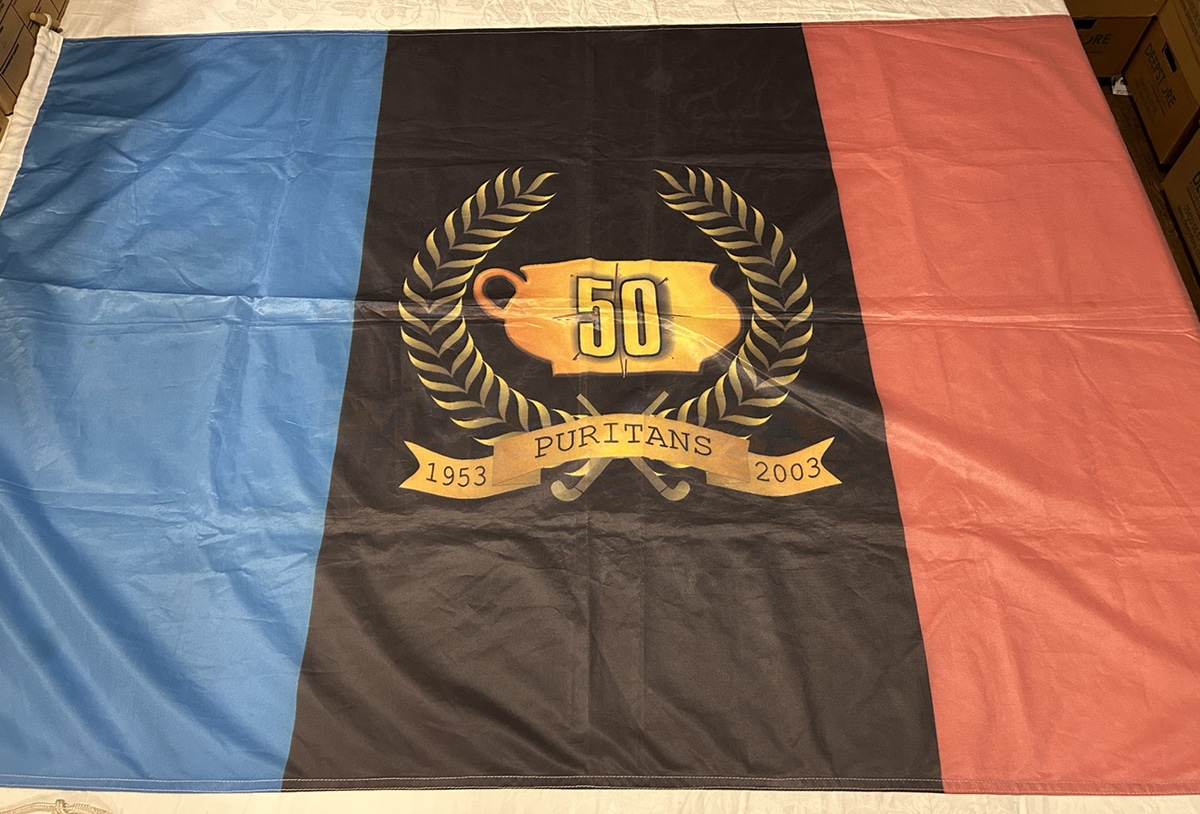From calisthenics to swimming and from skating to tennis, women of the nineteenth century had entered the world of sport. They swung rackets and picked up weights, flexing previously under-used muscles and moving their bodies in new ways. Victorian women found bodily liberation through sport activities, but their clothing remained a restricting factor. Long skirts were a trip hazard, and corsets, although useful as a supportive aid to the back and abdominal muscles, could be hot and limited the wearer’s ability to twist the body. While there was growing social acceptance of women’s participation in sport, their clothing had to adapt to allow them the necessary freedom and range of movement.
The clothing adapted to be worn by women in field hockey was part of a broader trend in adapting evolving fashionable styles to match the needs of bodily movement. As croquet became popular in the 1860s, skirt hooks allowed women to lift and fasten their hems away from the ground. As cycling became commonplace for women, first Amelia Bloomer’s eponymous style of knickerbockers and later split leg skirts become prevalent. These innovations in tailoring allowed the skirt to be unbuttoned down the front, revealing separate trouser legs, keeping the woman cyclist comfortable and conforming to Victorian standards of modesty. Corsets did not escape these adaptations, as breathable ribbon corsets were developed, which provided women with the necessary bust and back support, while allowing the fabric to breath.

Image: Kent women’s hockey players at Western Counties annual tournament at Weston-super-Mare, c.1908.
Within field hockey, as the twentieth century dawned, skirt lengths gradually shortened in parallel with changing fashions. In recent years women could wear shorts, but the entire team still had to all be in skorts or shorts. England and Great Britain Hockey pushed for still greater change. The June 2023 landmark decision by the International Hockey Federation finally allows women to wear their individual choice of shorts or skorts when playing in international competitions.
News | FIH Announce Updated Kit Regulations On The Back Of England And Great Britain Hockey Request
England Great Britain women’s captain Hollie Pearne-Webb said of the International Hockey Federation’s (FIH) decision: “This is a big milestone for female sport, and we can all be proud that we, as well as the next generation of athletes, will have the choice for what makes them most comfortable.”
In the nineteenth century, garments defined women’s roles as participants in sport. The adaptations were more than practical allowances – they were acts of bodily liberation, which reflected the symbiotic relationship between the cut, construction, and fit of garments and the activities of (or restrictions upon) the body.
Recently, THM has been part of a successful bid with two De Montfort University historians, Dr. Heather Dichter, who is also a THM Trustee, and Dr. Serena Dyer, for a funded PhD on the history of field hockey fashion [ https://www.midlands4cities.ac.uk/wp-content/uploads/DMU-The-Hockey-Museum.pdf ]. The project will use THM’s extensive textile collection to demonstrate changes in shape, style, and material that reflect societal and technological changes in both women’s and men’s field hockey attire. This exciting project will be funded by Midlands 4 Cities, one of the regional consortiums funded by the Arts & Humanities Research Council (AHRC), and the successful applicant will start this project in September 2024.








